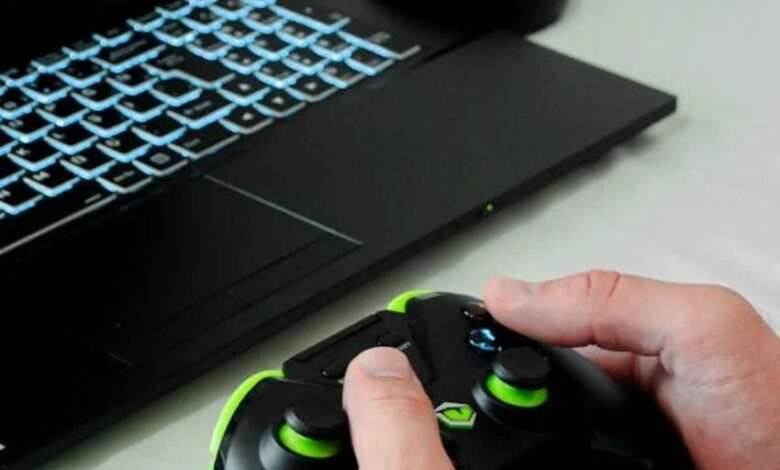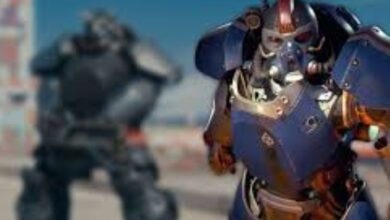The Legacy of Halo (2003) Game Icons Banners

Halo (2003) Game Icons Banners, marked a significant milestone in gaming history, not just for its innovative gameplay but also for its distinct and memorable visual elements. The game’s icons and banners played a pivotal role in shaping its identity, making it one of the most recognizable franchises in the gaming world. In this article, we’ll explore what “Halo (2003) game icons banners” are, their significance, design evolution, and how they have left an indelible mark on both the game and its community.
Understanding Halo (2003) Game Icons Banners
The term “Halo (2003) game icons banners” refers to the various visual elements within the game that represent characters, vehicles, weapons, and important events or factions. These icons and banners are not merely decorative but serve as crucial components of the game’s user interface (UI), helping players navigate the complex world of Halo and understand its rich lore.
Icons in Halo are small graphical representations, often found in the game’s heads-up display (HUD) and menus. These icons symbolize different elements, such as the Master Chief’s helmet, which has become an emblem of strength and resilience. Banners, on the other hand, are larger visual elements used as headers or background images in menus, loading screens, and promotional materials. They often feature key characters, epic battle scenes, or the iconic Halo ring, setting the tone for the game and enhancing its immersive atmosphere.
The Design and Evolution of Halo’s Icons and Banners
The design of Halo’s icons and banners is guided by several key principles: simplicity, consistency, relevance, and scalability. These principles ensure that the icons are easily recognizable and effective in conveying information to players, regardless of the context in which they are used.
In the early 2000s, when Halo was first released, the icons and banners were designed with the technology of the time, featuring simpler graphics and lower resolutions. However, as technology advanced, so did the design of these visual elements. Special editions and updates introduced higher resolution graphics and more detailed designs, reflecting the evolving artistic trends and player expectations.
For instance, the Master Chief’s helmet, with its distinctive golden visor and angular contours, has remained a central icon throughout the franchise. Its design has evolved, becoming more detailed and nuanced with each iteration, but it has always retained its core elements, making it instantly recognizable to fans. Similarly, the Halo ring, often depicted in banners, has become a symbol of the game’s expansive and mysterious universe, capturing the imagination of players worldwide.
The Significance of Icons and Banners in Gameplay
Icons and banners in Halo (2003) are more than just aesthetic elements; they play a crucial role in the gameplay experience. For example, weapon icons allow players to quickly identify and switch between different weapons during intense firefights, while vehicle icons help them choose the right transport for the mission at hand. These icons are designed to be intuitive, ensuring that players can focus on the action without being distracted by complex UI elements.
Banners, too, contribute to the gameplay by setting the mood and providing context for various scenarios. Whether it’s a banner featuring the ominous Covenant insignia or a panoramic view of the Halo ring, these visual elements help immerse players in the game’s universe, making the experience more engaging and memorable.
The Role of Icons and Banners in Community Engagement
The impact of Halo’s icons and banners extends beyond the game itself, playing a significant role in fostering community engagement. The game’s strong, recognizable visual elements have become a cornerstone of its brand identity, helping to create a sense of belonging among players. Customizable icons and banners allow players to express their individuality and team identity, whether in multiplayer matches or community events.
The Halo community has also contributed to the evolution of these visual elements. Fan-made content, such as custom emblems, wallpapers, and banners, showcases the creativity and passion of the Halo fanbase. This grassroots creativity has not only enriched the game’s visual culture but also strengthened the bond between developers and players, ensuring that Halo remains a vibrant and active community more than two decades after its release.
Cultural Impact and Legacy
The design and implementation of “Halo (2003) game icons banners” have had a lasting impact on the gaming industry. The game’s emphasis on clarity, distinctiveness, and thematic consistency set a new standard for visual design in video games. Many developers have since drawn inspiration from Halo’s approach, incorporating similar design principles into their own games.
Moreover, the cultural significance of Halo’s icons and banners cannot be overstated. They have permeated popular culture, appearing in everything from fan art and merchandise to cosplay and media adaptations. The Master Chief’s helmet, the UNSC logo, and the Halo ring have all become symbols of gaming excellence, representing not just the game itself but also the broader themes of heroism, resilience, and exploration.
The Future of Halo’s Icons and Banners
As the Halo franchise continues to evolve, so too will its icons and banners. Advances in technology will allow for even more detailed and immersive visual elements, further enhancing the player’s experience. However, the core principles that have guided the design of these elements since 2003—simplicity, consistency, relevance, and scalability—will remain central to their continued success.
The legacy of “Halo (2003) game icons banners” is a testament to the power of visual design in video games. These elements have not only contributed to the game’s identity and player experience but have also fostered a sense of community and cultural significance that continues to resonate with fans around the world. As we look to the future of the Halo franchise, it’s clear that its icons and banners will remain an integral part of its enduring appeal.
